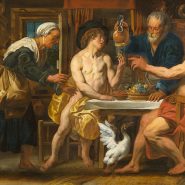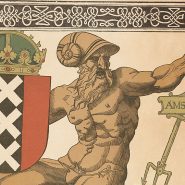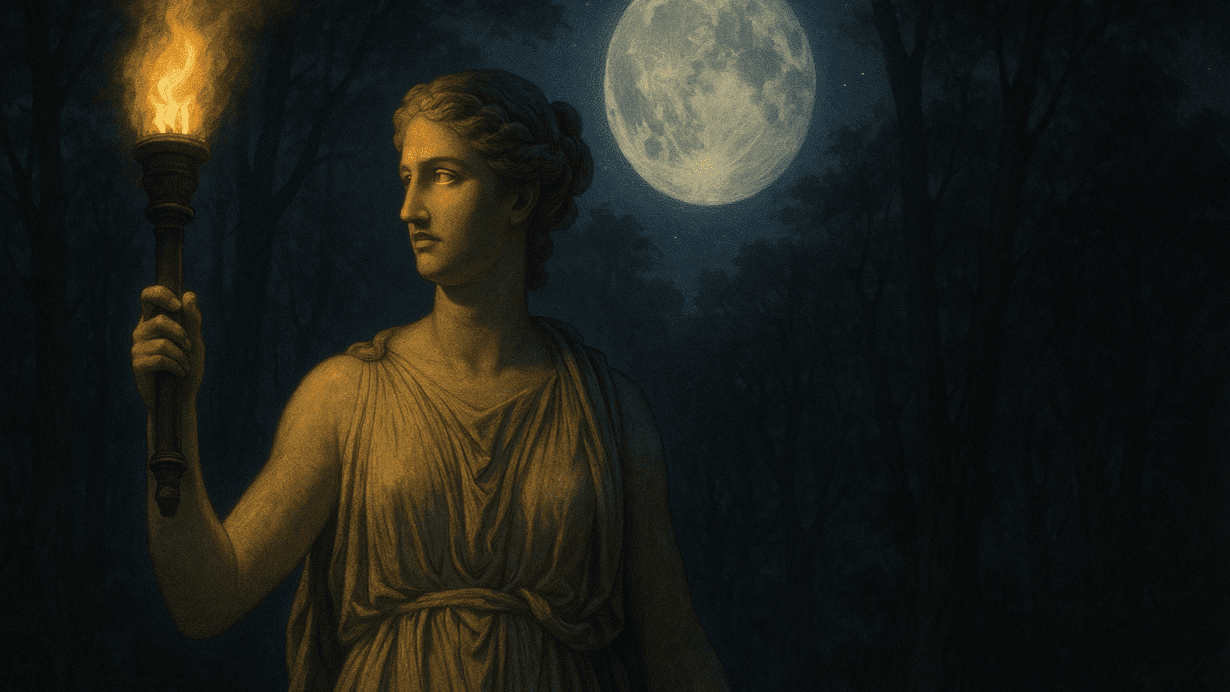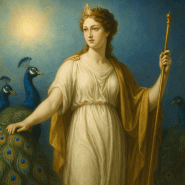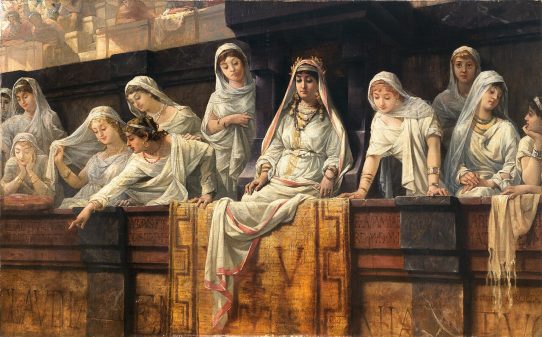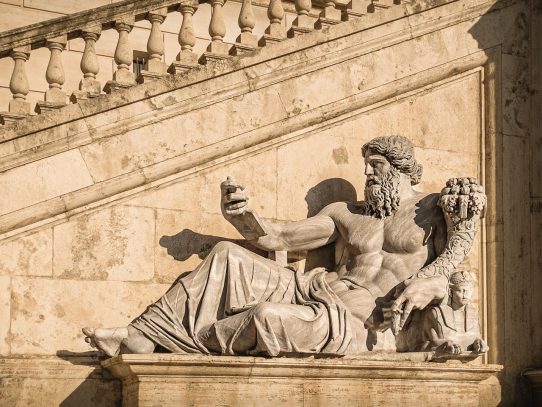Among the sacred emblems of Roman mythology, few hold as much mystique as the torch of Diana. Known as the goddess of the hunt, the moon, and chastity, Diana was often portrayed as both fierce and benevolent, wandering the nocturnal forests with a torch in hand.
This light was not a mere tool — it was a symbol of her divine vigilance and power over the night. Through its flame, she guided lost travelers, protected women, and illuminated paths through both the literal and spiritual darkness that surrounded humankind.
The Eternal Huntress and Her Flame
Diana’s torch was first and foremost a companion to her hunt. As the moon rose over wooded hills, her light led hounds and nymphs across shadowed glades. Ancient poets imagined her as a spectral figure moving silently through the trees, her torch flickering like a star fallen to earth. In this sense, the torch functioned as both practical and divine: a source of light for the hunt and an emblem of her dominion over the mysteries of the night.
For Romans, who often merged religion with the rhythms of nature, Diana’s torch embodied the union of fire and moonlight. Both represented guidance, transformation, and the constant presence of the divine in the world’s cycles. To see a torch glimmering in the forest was to feel the presence of the goddess herself — watchful, swift, and pure.
The Nemoralia: Festival of Torches
The power of Diana’s light was most vividly celebrated during the Nemoralia, her festival held every August at Lake Nemi. Pilgrims and worshippers gathered at her sanctuary, carrying torches and candles to honor the goddess who ruled over wild animals, women, and the moon.
Lake Nemi was often called Speculum Dianae — the Mirror of Diana — for at night its surface reflected both the torches of the faithful and the silver glow of the moon above.
During this festival, women would bathe in the lake’s sacred waters and leave garlands of flowers upon its surface. The torches symbolized purification, illuminating not only the dark paths leading to the temple but also the inner spirit of those who sought Diana’s blessing. The ritual glow transformed the night into a living prayer, reminding participants that darkness could never fully extinguish the divine light.
The festival also carried social meaning: slaves were temporarily freed from labor, travelers found refuge, and even hunters laid down their weapons in respect for the animals sacred to the goddess. The torch, in this context, was a sign of peace as much as illumination — a light that united rather than divided.
Fire as Purity and Transformation
In Roman spiritual thought, fire was a purifier. It burned away impurity, symbolizing moral clarity and renewal. Diana’s torch, then, was not just physical fire but spiritual illumination. It revealed truth, warded off evil spirits, and cleansed the heart. This sacred flame aligned Diana with other light-bearing deities — Vesta, who tended the hearth; Ceres, who lit the harvest fires; and even Apollo, whose sunlight inspired wisdom.
Yet Diana’s light was distinct from theirs. It was softer, more introspective, belonging to the nocturnal world where silence and intuition reign. Her torch did not blaze with the conquering brilliance of Apollo’s sun — it glowed like the quiet persistence of faith. In this, the torch symbolized the divine feminine’s wisdom: perceptive, enduring, and nurturing even in shadow.
Some scholars interpret the torch as an emblem of consciousness itself — the flame of awareness that illuminates one’s inner wilderness. To follow Diana’s torch was to follow one’s higher instincts, guided not by reason alone but by the intuition of the soul.
The Torch and the Moon
Diana’s torch was a mirror of her celestial aspect, for the goddess was also Luna, the personification of the moon. Just as the moon reflects sunlight, so too did her torch reflect divine illumination. The parallel between torchlight and moonlight revealed the dual nature of her divinity: the earthly and the heavenly, the visible and the hidden.
When Romans looked upon the moon’s pale glow, they saw the goddess watching over the world with her eternal flame. Each lunar phase corresponded to a different quality of her light — the waxing moon to growth and fertility, the full moon to protection and abundance, and the waning moon to purification and renewal. Her torch, then, was not bound to the material world but to the cycles of nature and spirit.
The Torch in Roman Art and Literature
Roman artists captured Diana’s torch in countless forms. In marble reliefs and bronze statuettes, she is shown striding forward with a torch raised high, her hunting dogs at her side. In frescoes, her light pierces the gloom of wooded landscapes, guiding nymphs or illuminating sacred groves. The torch also appeared in funerary art, where it symbolized the soul’s passage from life to the afterworld. A torch held upright represented life and divine vitality; inverted, it signified death and the extinguishing of earthly existence.
In Latin literature, poets such as Ovid and Statius described Diana’s torch as a beacon for the pure-hearted. Its glow dispelled the terrors of the night and revealed truth hidden by shadow. To them, her light was not destructive fire but a companion of wisdom — a fire that teaches without burning.
Influence on Later Symbolism
Diana’s torch did not fade with the decline of Roman religion. Through the ages, its imagery persisted in Western art and philosophy. In Renaissance allegory, her torch became a symbol of enlightenment and humanism, echoing the idea that knowledge is a form of sacred light. Later, as Christian art transformed pagan motifs, Diana’s torch reappeared subtly as the candles of saints and virgins — flames that signify divine purity and truth.
Even modern icons like the Statue of Liberty hold echoes of this ancient image: a female figure raising a torch to illuminate the world. Though separated by centuries, these symbols share the same root — the belief that light, when guided by virtue, is humanity’s most enduring power.
The Spiritual Meaning of the Torch
At its core, Diana’s torch represents the triumph of awareness over darkness. To hold such a light is to claim a deeper understanding of one’s place in the cosmos. It is the illumination that arises not from conquest but from communion with nature. The goddess’s torch asks her followers to see beyond fear, to recognize the sacred in the stillness of the night.
In this way, her torch transcends religion and enters philosophy. It invites the seeker to become the bearer of light in their own life — to navigate uncertainty with grace, to pursue wisdom without arrogance, and to honor the mysteries that can only be seen in darkness.
Diana’s Enduring Flame
The Romans revered Diana as both protector and teacher. Her torch, ever-glowing, was a reminder that divinity is not found in distant heavens but in the light that burns quietly within. Whether in the shimmer of moonlight on a calm lake or in the flicker of a candle at dusk, her presence endures.
In every generation, humanity rediscovers her flame — sometimes in myth, sometimes in art, sometimes in the courage to move forward through shadow. Diana’s torch remains her most enduring symbol: a promise that even in the darkest night, the light of purity, wisdom, and hope shall never be extinguished.
